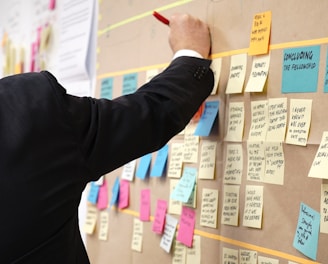Scroll down to read more
Creating a collaborative framework to bridge ux enterprise gaps
Design OPS ( Request flow )
Design System Setup
UX Research
Client: ING WB
Year: 2018
As part of the first dedicated UX team within ING Wholesale Banking, we were tasked with a unique and exciting challenge: laying the foundation for a design system that could support the division’s enterprise-level (B2B) applications. Unlike ING’s domestic retail division, which had a more mature UX practice focused on B2C, Wholesale Banking was at the beginning of its UX journey.
Our role wasn’t just about creating a design system—it was about building the groundwork for a scalable and collaborative UX framework that could evolve over time. Balancing the complexity of enterprise UX with the need for consistency across ING’s applications required a strategic and thoughtful approach.
OBJECTIVE






Laying the UX Foundation
As the first UX team in Wholesale Banking, our priority was to set up the structures and practices that would enable long-term success:
Stakeholder Engagement: Introduced the value of UX for enterprise solutions and created alignment with business objectives.
Process Definition: Established workflows for UX research, design, and feedback to guide teams in adopting UX practices.
Team Empowerment: Created opportunities for collaboration and knowledge sharing, fostering a culture of UX across the division.


Streamlining Research Requests
To support our foundational work, we implemented a structured process for managing research and design requests:
Discovery Workshops: Used frameworks like Jobs To Be Done (JTBD) to uncover the core problems stakeholders needed to solve.
Custom Request Forms: Created a streamlined process for submitting research requests, ensuring clarity and prioritization.
Centralized Management: Integrated requests into a shared Jira board for transparency and collaborative decision-making.


As a UX team, we implemented Triple Track Agile Discovery and Research Sprints to ensure we consistently deliver the right, user-tested solutions. This approach allowed us to balance discovery, delivery, and validation in parallel, keeping our designs grounded in real user needs while aligning with business goals and technical capabilities.




Adapting the Design System
Rather than building a design system from scratch, we worked collaboratively with the domestic team to adapt their existing system to meet the needs of enterprise applications:
Framework Development: Identified gaps in the existing system and began defining foundational components that could support complex enterprise workflows.
Collaboration Processes: Set up feedback loops and shared guidelines to align on design decisions across B2C and B2B teams.
Scalability Focus: Ensured the foundation was flexible enough to support future growth as Wholesale Banking’s UX needs evolved.




Our Triple Track Agile Approach
Discovery Track:
We kicked off projects by conducting in-depth user research, mapping pain points, and identifying opportunities.
Through workshops and collaborative sessions, we aligned with stakeholders to define clear objectives and prioritize solutions.
This track ensured we were solving the right problems from the outset.
Delivery Track:
In close collaboration with developers, we designed and iterated on prototypes using scalable design systems to maintain consistency.
We worked in short, focused sprints, continuously refining our designs for seamless implementation.
Our goal was to deliver functional, user-ready solutions efficiently without compromising on quality.
Validation Track:
Testing was integrated into every sprint, allowing us to gather feedback early and often.
By validating ideas and solutions with real users, we ensured our designs met their needs while also driving business outcomes.
This iterative process helped us pivot quickly if required and continuously improve the experience.
By running these three tracks simultaneously, we stayed agile and adaptable, reducing the risk of misaligned solutions. This approach also fostered stronger collaboration between design, development, and business teams, ensuring everyone stayed focused on delivering tested, impactful results.


OUR STORY
Reflection
Although the project focused on establishing a foundation rather than delivering a complete design system, the impact was significant:
Established a UX Foundation: Built the groundwork for a scalable design system and introduced processes that supported UX maturity within Wholesale Banking.
Aligned Teams: Created alignment between the B2C and B2B divisions, ensuring collaboration and shared goals for the design system.
Enabled Scalability: Set up a flexible and adaptable framework that could evolve as the design system matured and UX capabilities grew.
Improved Efficiency: Streamlined research and design request processes, reducing inefficiencies and enabling the team to focus on high-impact work.
This project was about more than just creating components or tools—it was about building the foundation for a UX culture within ING Wholesale Banking. Starting from scratch in a complex enterprise environment required a strategic approach, balancing immediate needs with long-term scalability.
By the end of the project, we had laid the groundwork for a design system that could evolve and grow with the organization, while fostering alignment and collaboration across ING’s divisions.
This case exemplifies the importance of starting with a strong foundation, enabling a team to build something truly impactful over time.
Get in touch
I invite you to join me for a free 30 min discovery call where we can explore how my expertise can help your business or enhance your team's design capabilities.
© 2024 Wynand Klees
